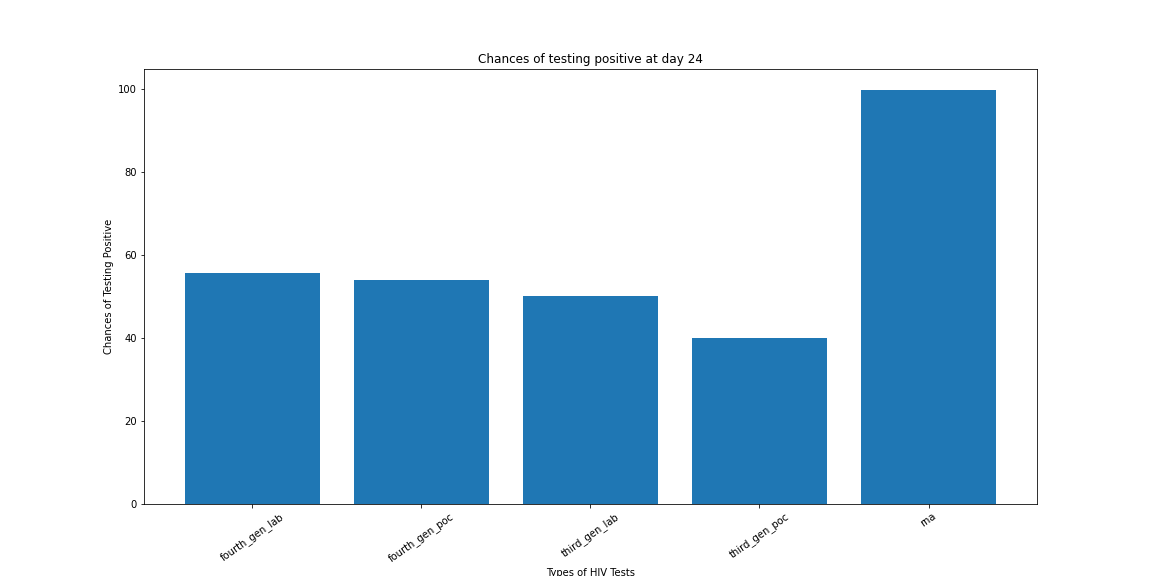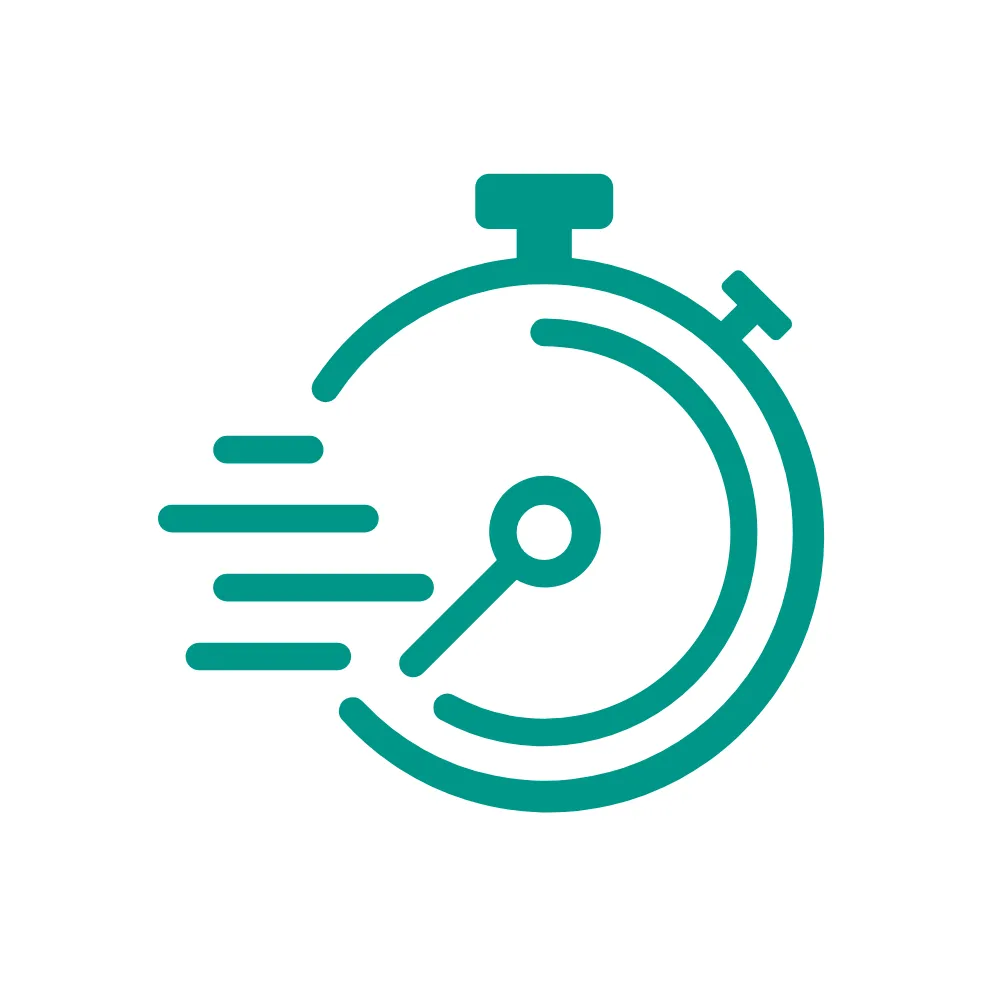
HIV Test after 24 days : which test to do
Learn which test has the best chance of diagnosing an HIV infection , 24 days after exposure. In depth analysis of 3rd generation, 4th generation and RNA PCR tests as well as their likelihoods of showing positive.
Published Date : 2023-09-10T20:54:05.696Z
Updated Date : 2023-09-10T20:54:05.696+00:00
Table of Contents
How does the HIV virus multiply inside the body
What viral particles are in the body around 24 days after exposure?
What is a window period?
Which are the different tests that can be done to detect HIV?
Will a 4th generation lab based test detect HIV at 24 days?
Will a 4th generation Point of Care based test detect HIV at 24 days?
Will a third generation lab based assay detect HIV at 24 days?
Will a third generation point of care based assay detect HIV at 24 days?
Will a RNA PCR test detect HIV at 24 days?
What is the confirmatory test for HIV at 24?
References
How does the HIV virus multiply inside the body
When the HIV virus comes into contact with individuals, its replication commences within submucosal cells. Upon interacting with CD4 helper T cells, vital components of the immune system, the virus establishes a connection. Following this interaction, viral RNA, carrying the virus's genetic material, penetrates these CD4 cells. Subsequently, the viral RNA is transcribed into viral DNA via the action of reverse transcriptase. This introduced viral DNA takes control of the cell's machinery, steering it to produce an elevated number of viral particles. Eventually, the infected cell reaches its maximum capacity, leading to its rupture and the discharge of newly formed virions into the bloodstream.
What is a window period?
The window period represents the time during which HIV infection can be ongoing but test results may not yet reflect the presence of the virus.
Which are the different tests that can be done to detect HIV?
Various testing methods are available for HIV detection, each focusing on different components of the virus. These include tests targeting the p24 antigen, specific antibodies (IgM and IgG), and the use of RNA PCR for increased sensitivity.
Third Generation Tests
3rd generation tests are so called because they detect antibodies to the HIV 1 and HIV 2 strains. These tests are available in two formats - lab based automated assays, which automate the processes of pipetting and dispensing and point of care assays that can be done using standard manual pipetting.
| Test Type | Description | Test Names |
|---|---|---|
| 3rd Generation | 3rd generation tests detect antibodies against HIV. |
|
Fourth Generation Tests
4th generation tests are so called because they detect both the HIV P24 antigen as well as antibodies to the HIV 1 and HIV 2 strains. These tests are available in two formats - lab based automated assays, which automate the processes of pipetting and dispensing and point of care assays that can be done using standard manual pipetting.
| Test Type | Description | Test Names |
|---|---|---|
| 4th Generation | 4th generation tests detect both antigen and antibodies. |
|

Will a 4th generation lab based test detect HIV at 24 days?
There is a relatively high chance of a 4th generation lab based test being able to detect the virus in your body on day 24 after exposure to the HIV virus.
An innovative approach to HIV testing, the 4th generation test identifies both the p24 antigen and IgM/IgG antibodies together, enhancing early detection..Lab based assays as described above are fully automated and are considered to be one of the most sensitive tests for early diagnosis of HIV. If you were exposed to HIV, there is a 55.7% chance that the 4th generation lab based assay will be able to detect the virus at 24 days. This is based on the varying levels of the p24 antigen as well as the time it takes for the antibodies to develop in the body agains the virus. It is recommended that you retest after some days since the chances of detecting HIV increase with time.
There is a relatively high chance of a 4th generation lab based test being able to detect the virus in your body on day 24 after exposure to the HIV virus.

Will a 4th generation Point of Care based test detect HIV at 24 days?
There is a relatively high chance of a 4th generation point of care based test being able to detect the virus in your body on day 24 after exposure to the HIV virus.
.Point of care assays as described above are generally performed with methods like lateral flow immunochromatography and are well suited for low resource and bedside settings. These assays have now achieved comparable results to lab based assays. If you were exposed to HIV, there is a 54.0% chance that a 4th generation point of care based assay will be able to detect the virus at 24. This is based on the varying levels of the p24 antigen as well as the time it takes for the antibodies to develop in the body agains the virus. It is recommended that you retest after some days since the chances of detecting HIV increase with time.
There is a relatively high chance of a 4th generation point of care based test being able to detect the virus in your body on day 24 after exposure to the HIV virus.

Will a third generation lab based assay detect HIV at 24 days?
There is a relatively high chance of a 3rd generation lab based test being able to detect the virus in your body on day 24 after exposure to the HIV virus.
A 3rd generation HIV test is a traditional screening method that detects both IgM and IgG antibodies against the HIV virus in a single test..Third generation assay only test for the IgM and IgG antibodies, as such the latency for positivity with these assays is greater. Third generation lab based assays use automation in various steps of the test and as such are considered to be more accurate than the point of care tests, however they require more expensive equipment. If you were exposed to HIV, there is a 50.0% chance that a 3rd generation lab based assay will be able to detect the virus at 24 days. This is based on the time it takes for the antibodies to develop in the body agains the virus. It is recommended that you retest after some days since the chances of detecting HIV increase with time.
There is a relatively high chance of a 3rd generation lab based test being able to detect the virus in your body on day 24 after exposure to the HIV virus.

Will a third generation point of care based assay detect HIV at 24 days?
There is a moderate chance of a 3rd generation point of care based test being able to detect the virus in your body on day 24 after exposure to the HIV virus.
This is because the analytes measured by this test, namely - IgM and IgG antibodies are not yet present in adequate concentration in your blood by day 24 of the infection.
.Third generation assay only test for the IgM and IgG antibodies, as such the latency for positivity with these assays is greater. Third generation point of care based assays use lateral flow chromatography or similar techniques and are suited for low resource settings. If you were exposed to HIV, there is a 39.9% chance, that a 3rd generation point of care based assay will be able to detect the virus at 24 days. This is based on the time it takes for the antibodies to develop in the body agains the virus. It is recommended that you retest after some days since the chances of detecting HIV increase with time.
There is a moderate chance of a 3rd generation point of care based test being able to detect the virus in your body on day 24 after exposure to the HIV virus.
This is because the analytes measured by this test, namely - IgM and IgG antibodies are not yet present in adequate concentration in your blood by day 24 of the infection.

Will a RNA PCR test detect HIV at 24 days?
There is a good chance of a RNA PCR Molecular Test being able to detect the virus in your body on day 24 after exposure to the HIV virus.
RNA PCR assays can detect viral loads as low as 20 copies of viral RNA/ml. RNA PCR assays can detect the virus as early as 10-12 days, and almost all patients will show positivity between 20-30 days.Based on the fact that you have been exposed 24 days ago, there is a 99.8% chance of the RNA PCR test being able to detect the virus.
There is a good chance of a RNA PCR Molecular Test being able to detect the virus in your body on day 24 after exposure to the HIV virus.
What is the confirmatory test for HIV at 24?
There is no 100% confirmatory test for HIV. Any negative test is recommended to be repeated after 45-90 days. Positive tests are usually reconfirmed on repeated sampling in accordance with the guidelines of your country's health organizations. While the RNA PCR test usually has the highest chance of detecting the virus, it is never recommended as a first line test, owing to its cost and complexity. A first line screening test is usually done (4th generation) and if it is positive, additional testing is recommeded.
References
- Hurt CB, Nelson JAE, Hightow-Weidman LB, Miller WC. Selecting an HIV Test: A Narrative Review for Clinicians and Researchers. Sex Transm Dis. 2017 Dec;44(12):739-746. doi: 10.1097/OLQ.0000000000000719. PMID: 29140890; PMCID: PMC5718364.Hurt et,al
- Kevin P. Delaney and others, Time Until Emergence of HIV Test Reactivity Following Infection With HIV-1: Implications for Interpreting Test Results and Retesting After Exposure, Clinical Infectious Diseases, Volume 64, Issue 1, 1 January 2017, Pages 53–59,Delaney et.al

